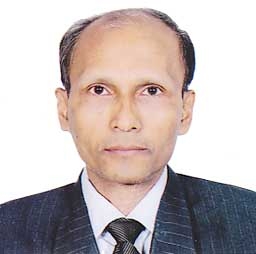
Masum Billah :
National Academy for Educational Management (NAEM) has recently conducted a research on students’ creativity and their satisfaction in the prevalent way of teaching learning situation in their classroom. The initiative of NAEM calls for appreciation as the institutions dedicated to developing teaching learning situation in the country get engaged in offering training and distributing certificates. Getting out of it and doing something practical, identifying some real problems, learning the causes of problems and finding out remedies and solutions taking the realities lying in education field into account should be another pragmatic step of training institutes. The research unfolds the current method of teaching that stands as a great a barrier to blooming creativity of the learners and appears boring to them. Most students have expressed their dissatisfaction over the way of teaching in the classroom.
However, it has become the principal concern of the teachers to cover the syllabus without ensuring or encouraging the pupils to participate in learning process spontaneously. Even though, the principal objective of education is not to cover the syllabus as it does not have any connection with acquiring knowledge and using it in practical life. Students need to have self-understanding and teachers need innovative ways to share with students. The entire system and accordingly almost all the educational institutions run the memorization and without creating any scope for students to think of something critically. Many teachers don’t have transparent idea about curriculum either, as the research reports. Which method to be followed in the classroom, how to deal with students, how long to teacher a particular topic, how to assess in the classroom, how to engage the students in teaching learning process – all these ideas are not well known to most teachers and they have hardly any desire or trial to develop these areas. In the public examination system, there is hardly any room to test the creativity and critical thinking skills of the learners, most teachers are not familiar with it as well.
We have turned our pupils into examinees from learners who basically need to learn from different sources and develop critical thinking skills. Passing in the public examinations has established itself as the principal cause of education. Questions are developed and students are sitting for examination to give answers following the set ways that have continued ages together even though ‘creative system’ to judge students’ merit has been introduced quite a long time back.
We know, in Finland school authorities can change the curriculum, revise it that our schools cannot. Firstly, because our teachers and school authorities are not well aware of curriculum. They just prepare the students for examination. Teachers literally need to have transparent idea about curriculum and to achieve the goals and objectives of curriculum, different ways and means to be adopted according to the needs, time, place and pulse of the learners and educational institutions. For that, teachers themselves should be ready. Every year the students of class six become familiar with this type of questions but many of them cannot form a basic idea on this type of question as teachers fail to make them understand it. Students get afraid of it and follow the questions and answers available in the guidebooks. A creative question is divided into four parts and at the beginning students are given a stem based with a new situation and four parts of a question are set based on the stem and all these four parts are put serially as per the level of difficulty stage. Such type of question tends to assess the stage of ability and skill of a learner if it is properly set. Knowledge or understanding stage is the first part of a creative question which is, though memory based, is significant and one mark is allotted for it. Second part is known as ‘comprehensive stage’ through which the capability to understand the text is tested. In this kind of answer, the similar type of description of the book is not asked for. Students are asked to describe the subject and it bears 2 marks. Third stage is application level. For answering this part, the stem must be very meaningful and standard that many teachers cannot do. They just follow it from the note books. The necessary information to give answer to this portion remains in the textbook. And the fourth part of the question is higher order thinking skill. It tests students’ judgement, analytical skill and decision-making ability. Necessary information to answer this portion remains in the textbook and the information needs to be applied in a new situation that evaluates learners’ decision-making ability.
The prevalent practice gives opportunity to two to three students to learn how to solve any mathematical problems or knots in other subjects. Rest of the students either remains silent in the classroom or engages themselves in other activities and try to learn the solution from other sources beyond the classroom. Possible sources are house tutors, or coaching centers or notebooks. Some smarter students take help from online classes or watching YouTube. Our classroom teaching hardly makes them creative or inspire them to think something critically to stimulate their creativity and this situation can be held responsible for students’ showing reluctance to classroom teaching.
When students can discover their busy and active participation in the classroom activities, their thinking ability gets stimulated as they directly can ask why a problem arises, its nature, its consequences, its remedies etc. When teachers get to know its significance, they will give special setup to the classroom where students will be busy and spend their classroom hours in excitement.
(Masum Billah is Country Director, Volunteers Association for Bangladesh and President, English Teachers’ Association
of Bangladesh).

